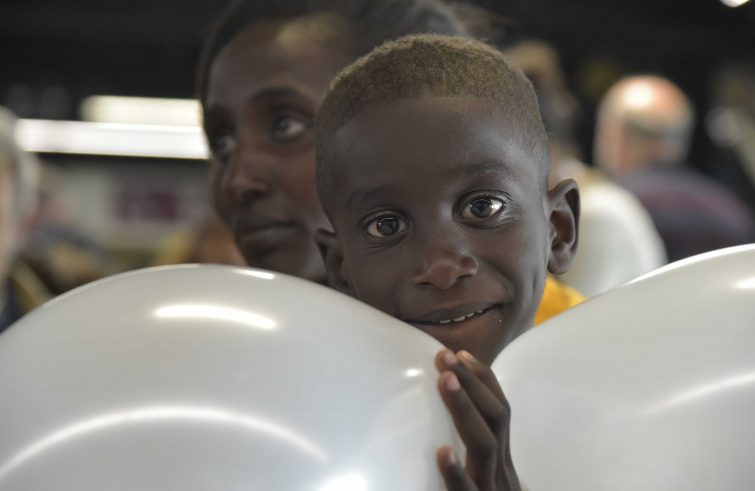
A slight decline in the number of admissions and beneficiaries since 2019 has discontinued the upward trend first registered in 2012. The SIPROMI/SAI annual Report, drawn up by the Italian Townships Association (ANCI) in conjunction with Italy’s Ministry of the Interior, provides an overview of the reception of persons granted international protection and unaccompanied minors in Italy. In the first 10 years of activity (2003-2012), the reception system registered a steady increase in the number of admissions and hosted immigrants, amounting to a threefold growth. In 2013, the year of the “North African emergency”, a significant increase in terms of capacity (+161%) and beneficiaries (+61%) was recorded. This trend continued until 2018. A steady decline in capacity (33,625, -6.3% compared to 2018) and recipients welcomed (39,686, -3.5% compared to 2018) began the following year. The reverse trend continued in 2020, when the number of available admissions totalled 31,324, with 37,372 recipients. However, according to the Report, in 2020 the capacity- beneficiaries ratio (1.19/1) remained substantially unchanged compared to the previous year (1.18/1).
“This shows that, in spite of a lower number of network programs”, reads the Report, “the System maintained its reception capacity, systematically accepting new immigrants, in compliance with the COVID-19 sanitary regulations that virtually marked the whole of 2020.”
In detail, out of 37,372 beneficiaries, 15.2% were unaccompanied foreign minors. Out of the 31,324 available places, Sicily provided the most with 4,672 (14.9%). According to an analysis of annual reports on the activities carried out in 2020 by the various adult and minors reception programs, there appears to be a substantial number of beneficiaries belonging to vulnerable categories. The largest share concerns victims of torture and/or violence (5.8% of the total number of immigrants received), followed by victims of trafficking in human beings (4.8%) and immigrants with mental disorders (3.1%).
Increasing numbers of unaccompanied foreign minors. A total of 5,680 unaccompanied foreign minors were received within the SIPROIM/SAI network in 2020 (+19.5% compared to 2019). This figure “reflects the steady increase in the number of children received, which kept pace with the growing number of projects and admissions devoted to this specific category of recipients.” Throughout 2020, 4,437 places were reserved for unaccompanied minors in 148 projects. As far as gender distribution is concerned, the majority is male, with 5,527 recipients in 2020, amounting to 97.3% of all recipients. As regards the nationality of unaccompanied minors, most of them arrived into Italy from Bangladesh (914 minors, 16.1%) and Albania (684 minors, 12%), followed by Tunisians (10%), Egyptians (9.5%) and Pakistanis (7.3%). As compared to 2019, Tunisian and Bangladeshi minors registered the greatest increase, followed by Albanians and Pakistanis: almost 48% of hosted immigrants arrived from these four countries.
Reception projects providers. The National Fund for Asylum Policies and Services financed a total of 794 projects in 2020 (-5.9% compared to the previous year). Three out of four projects focused on the reception of persons falling under the “ordinary” category (602 projects, i.e. 75.8%), while approximately one in five concerned the reception of unaccompanied foreign minors (148 projects, i.e. 18.6%.) The remaining projects were designed for the reception of persons suffering from mental distress and/or physical disabilities (44 projects, 5.5%). A decline was also registered in the number of projects promoted by local administrations: there were 679 in 2020, 4.8 % less than in 2019. The latter were implemented by 586 municipalities, 26 Unions of Municipalities/Mountain Communities, 18 Provinces of Regions and 49 by other bodies. Most of the 586 townships promoters of SAI Network projects were small municipalities. “This is a clear indication that the Reception and Integration System is operating in diverse territorial contexts, ranging from large urban areas to sparsely populated districts with minimal urban development.” Sixty-two per cent of all municipalities involved in the implementation of projects have less than 15,000 inhabitants and offered admission to 10,000 immigrants, corresponding to 39% of the total figure. One third of the municipalities in the 15-100,000 inhabitants bracket, made up 32% of the total number of the networks’ capacity, while 38 large municipalities with more than 100,000 inhabitants accounted for more than a quarter ( 28.5%) of the total capacity. As in previous years, also in 2020, the network’s accommodation facilities were primarily flats (85%), with a significant increase compared to 2019 (+19%).
The remarks of Minister Lamorgese. In her presentation of the SIPROMI/Sai annual Report, the Italian Minister of the Interior, Luciana Lamorgese, writes, “… Italy’s immigrant reception system has constantly grown and improved over the years, prioritising a nationwide model designed to facilitate the social inclusion of migrants and favouring the widest possible cooperation with local authorities, thereby maximising the planning capacity of local communities”.
This model, based on three characteristics – “widespread, inclusive, participatory” – has made it possible to “successfully address the impact of the pandemic on host communities during the global health crisis.”
These communities have been directly involved in the “sanitary quarantine measures applied on chartered vessels or in dedicated facilities” upon the migrants’ entry into the country. There remains the challenge of “ensuring that the reception model complies with constitutional and international commitments undertaken by our country.” “And also with the imperative need to consistently reconcile migrants’ compliance with State laws with the orderly management of migration flows, pursuing a political and social project aimed at the integration of foreign migrants.”









